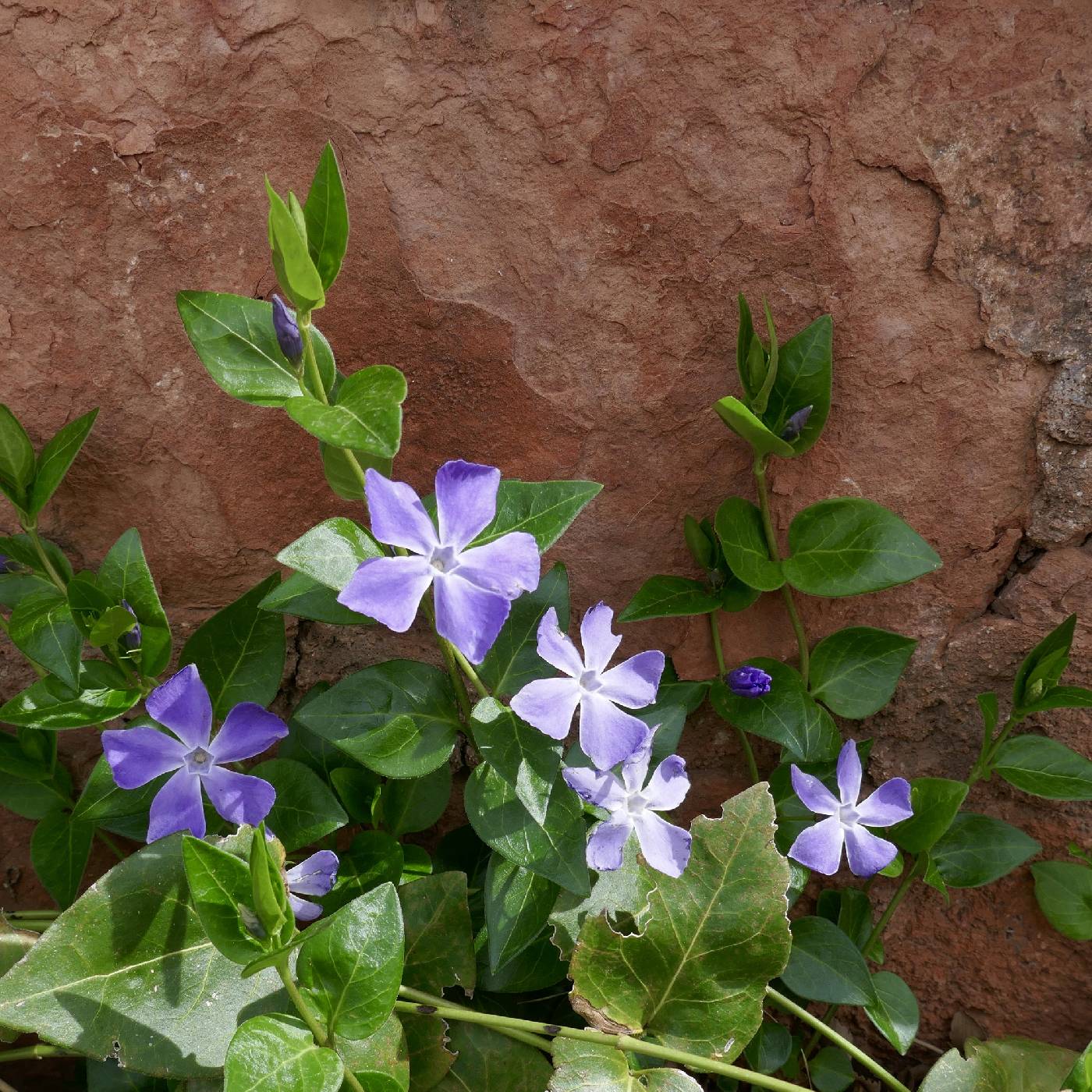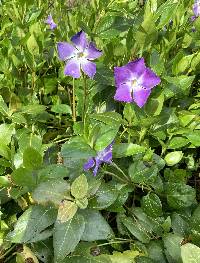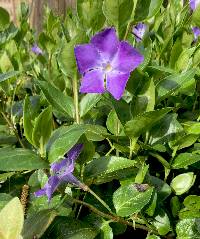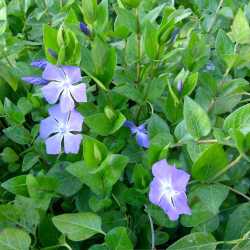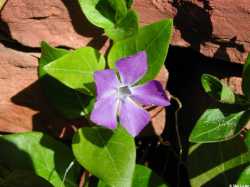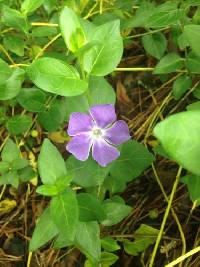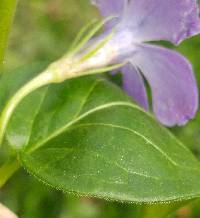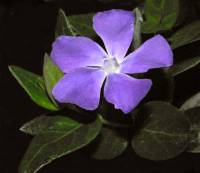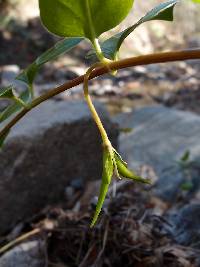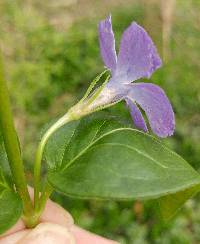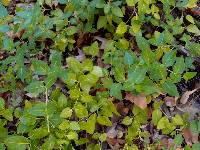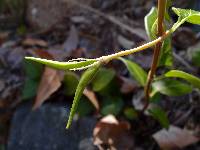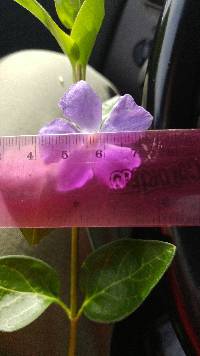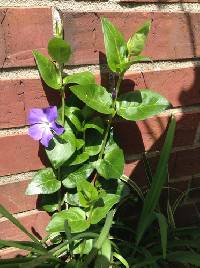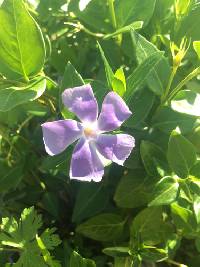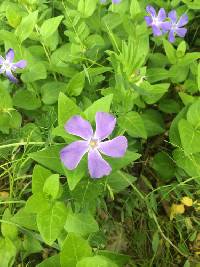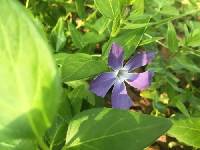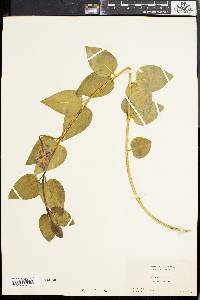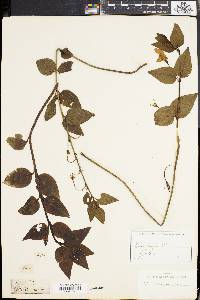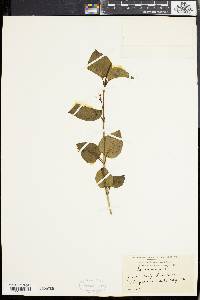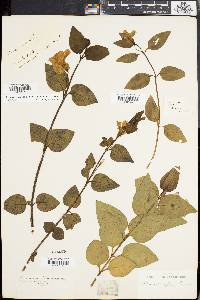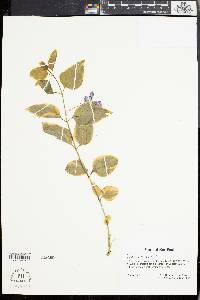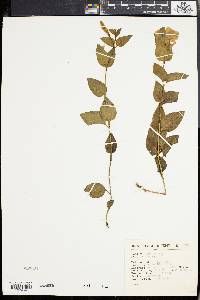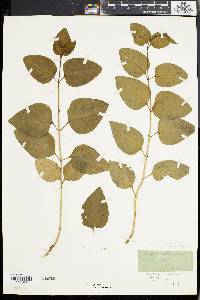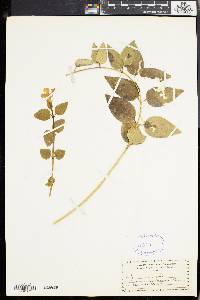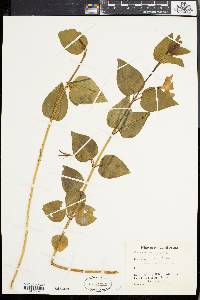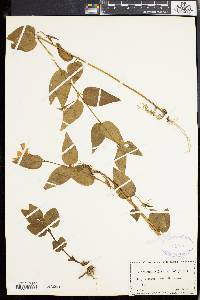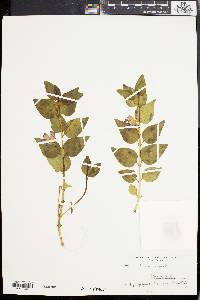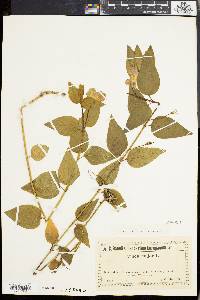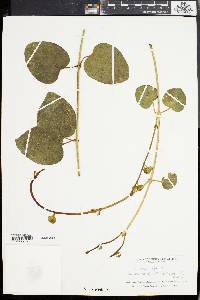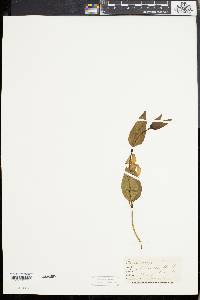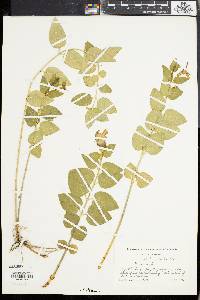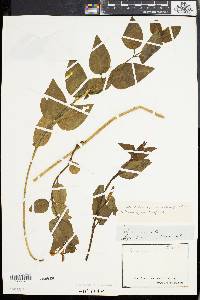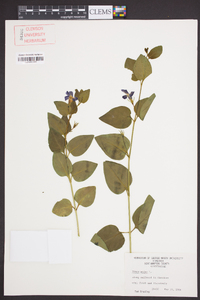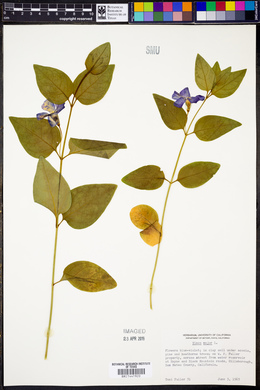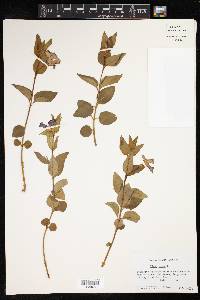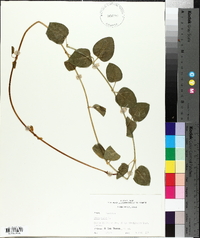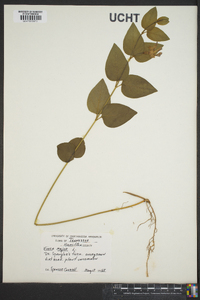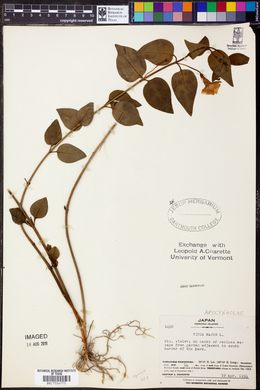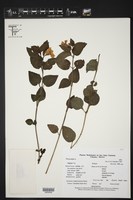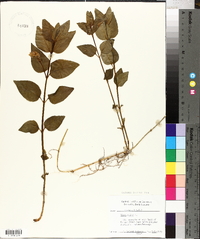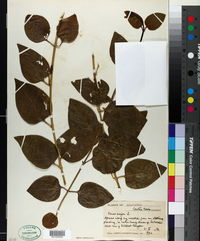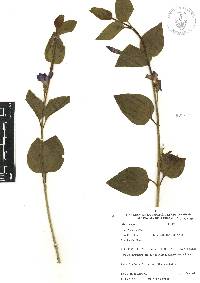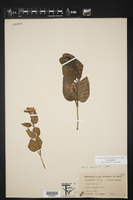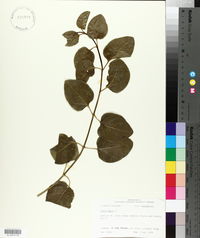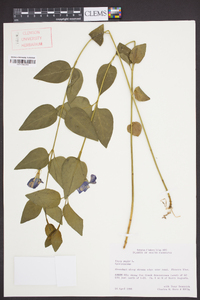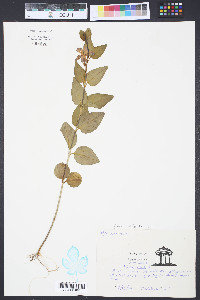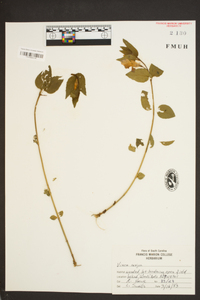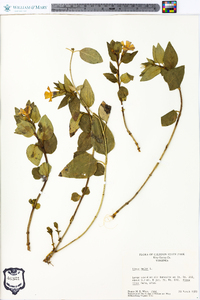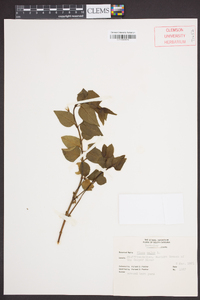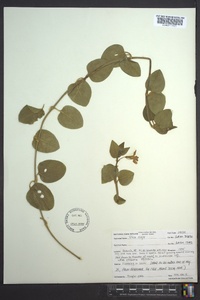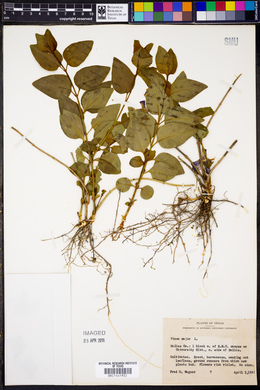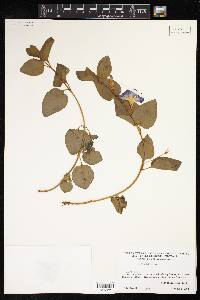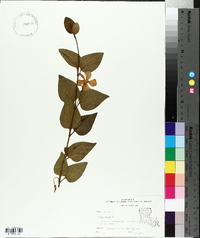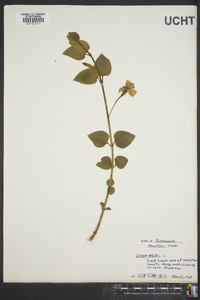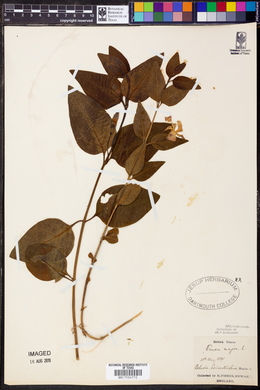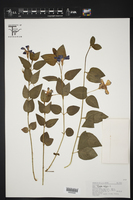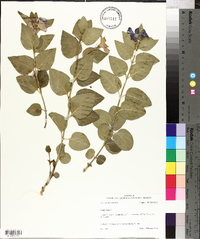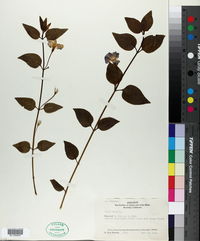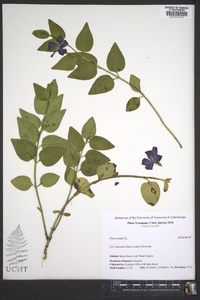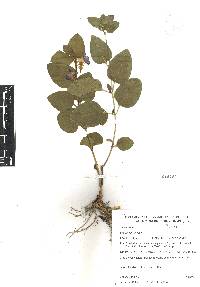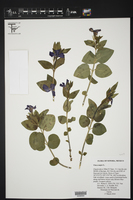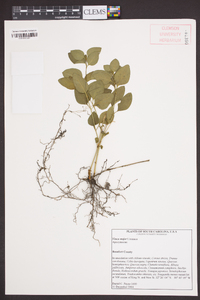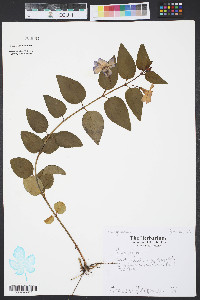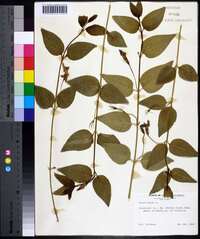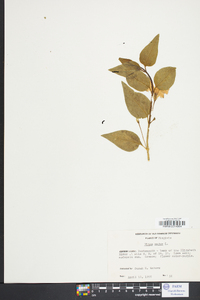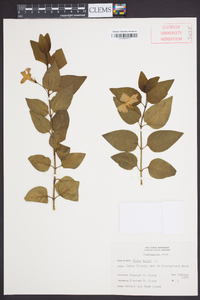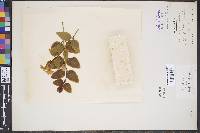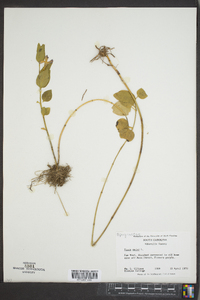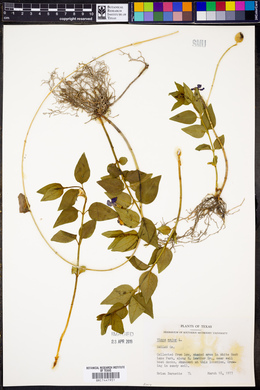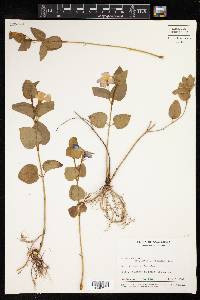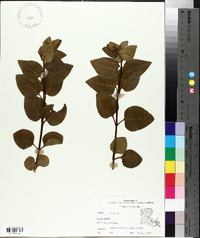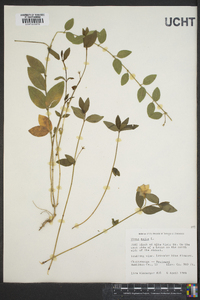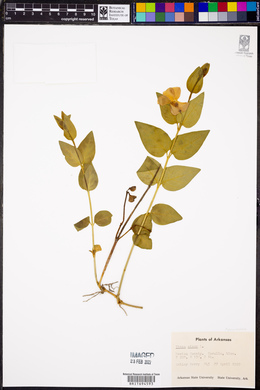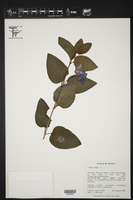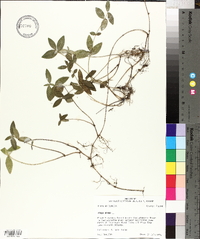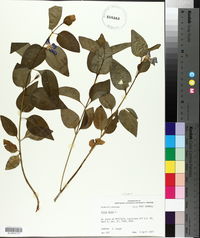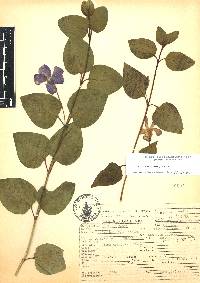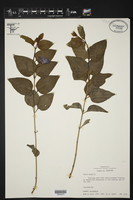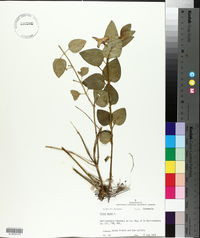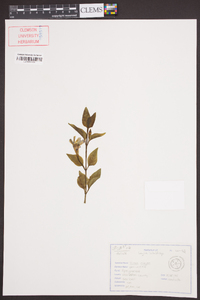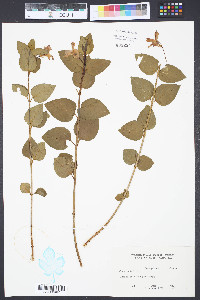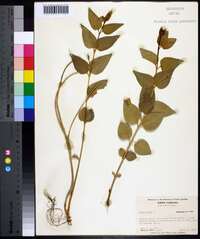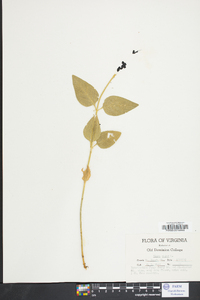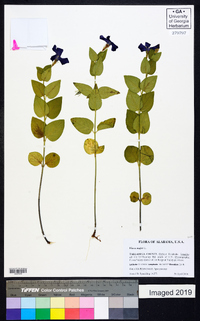Vinca major
|
|
|
|
Family: Apocynaceae
Greater Periwinkle
[Vinca major var. variegata Loud.] |
PLANT: Trailing perennial. LEAVES: petiolate, cordate, the blade 7 cm long, 2-5 cm wide, glabrous on the surface, occasionally ciliate on the margins and veins, the petiole 5-20 mm long, with a distinct pair of glands midway along the margins. FLOWERS: blue or violet; calyx lobes ciliate, linear, 7-13 mm long; corolla tube 12-17 mm long, the lobes 10-18 mm long. NOTES: Moist, shaded canyons; naturalized in Oak Creek Canyon, Coconino Co., Madera Canyon, Pima and Santa Cruz cos., Prescott, Yavapai Co., at several stations in Cochise Co., and doubtless elsewhere, 1350-1850 m (4500-6000ft); Mar- Nov; widely cultivated throughout the U.S. and often escaping. REFERENCES: McLaughlin, Steven, P. 1994. Apocynaceae. J. Ariz. - Nev. Acad. Sci. Volume 27, 164-168. Perennial herb or subshrub 30 cm to 2 m tall Leaves: opposite, stalked, evergreen, leathery, 2.5 - 9 cm long, 2 - 6 cm wide, egg-shaped or widely triangular-egg-shaped, widest below middle, non-toothed, but with 0.1 - 1 mm long, slender bristles along the edges. Flowers: on up to 50 cm long branches, but singly on stalks shorter than subtending leaves, arising from axils of one leaf per pair of leaves. The usually bluish-purple flowers are 3.5 - 5 cm in diameter, radially symmetric, and funnel-shaped with a gradually widened, spreading limb. Sepals: five, but fused at very base, then separating into 0.7 - 1.7 cm long, narrowly triangular or linear lobes with long-tapering pointed tips, and 0.5 - 1 mm long, bristly hairs along the edges. Petals: five, but fused into a 1.2 - 2 cm long tube for half their length, then separating into spreading lobes. At the mouth of the petal tube, there is a zone of hairs and a low ridge that connect the lobe bases. Stamens: five, attached halfway up petal tube (but below the ridge and hairs in the throat) with short filaments bent abruptly at the base, and separate anthers with connecting tissue which expands above into a flap-like appendage. Pistil: with two, superior ovaries having two disc-shaped nectaries alternating their bases; a single, slender style; and one stigma. Fruit: of two (per flower), dry, single-chambered, few-seeded, 3.5 - 4 cm long, linear, spindle-shaped, or short-cylindric (with two gradually tapered ends) capsule-like pods (follicles) which open lengthwise by a single seam. Stems: somewhat woody (remaining over winter), creeping, with ascending branches in the lower part, then arching or trailing, with flowering branches more or less erect, and up to 50 cm long. Seeds: four to eight per follicle, rough, but hairless. Similar species: Vinca major is most similar to V. minor, but that species has narrower, hairless leaves which are widest near the middle. Flowering: April to May Habitat and ecology: Rarely escaping from cultivation. Occurence in the Chicago region: non-native Notes: This species is native to the Mediterranean region of Europe, but has been cultivated in Europe for centuries. Etymology: Vinca means "to bind", in reference to the trailing, viny aspect of the genus. Major means large, referring to the larger stature of the plant, especially the larger flowers in comparison to the other species. Author: The Field Museum McLaughlin 1994, Jepson 1993 Duration: Perennial Nativity: Non-Native Lifeform: Vine General: Herbaceous, trailing perennials, stems arching, herbage glabrous, stems sometimes rooting at the tips. Leaves: Leaves opposite, ovate to cordate, to 7 cm long and 2-5 cm wide, margins entire, surfaces glabrous, petioles 5-20 mm long, with a distinct pair of glands midway along the margins. Flowers: Flowers blue or violet, funnelform with asymmetric lobes, corolla tube 3-5 cm wide, calyx lobes linear, ciliate, stamens attached near the top of the corolla tube, filaments bent sharply near the base, style thread-like, flowers borne solitary in leaf axils. Fruits: Follicles, generally 2 when produced, curved when present. Seeds many, glabrous. Ecology: Found in moist, shaded canyons, from 4,500-6,000 ft (1372-1829 m); flowering March-November. Distribution: Widely cultivated throughout the U.S. and often escaping. Notes: This plant, though most often seen as an ornamental, sometimes escapes into the wild. Look for its trailing stems and bluish-purple funnelform flowers to help identify this species. Ethnobotany: Unknown Synonyms: Vinca major var. variegata Editor: LCrumbacher 2012 Etymology: Vinca derives from the Latin name Vinca pervinca from vincio, "to bind," referring to the shoots, while major means larger, greater. More robust than no. 1 [Vinca minor L.], the flowering branches to 5 dm tall; lvs deltoid-ovate, 3-7 cm, ciliate; cor-tube 12-20 mm, the limb 3.5-5 cm wide; 2n=92. Native of s. Europe, occasionally escaped in s. U.S., n. to Va. and Ill. Apr., May. Gleason, Henry A. & Cronquist, Arthur J. 1991. Manual of vascular plants of northeastern United States and adjacent Canada. lxxv + 910 pp. ©The New York Botanical Garden. All rights reserved. Used by permission. ...... Indiana Coefficient of Conservatism: C = null, non-native Wetland Indicator Status: UPL Diagnostic Traits: trailing subshrubs; leaves opposite, evergreen, deltate-ovate, ciliate; petioles 6-8 mm long; flowers solitary in leaf axils, salverform, blue, greater than 3.2 cm wide. |
|
|
|

